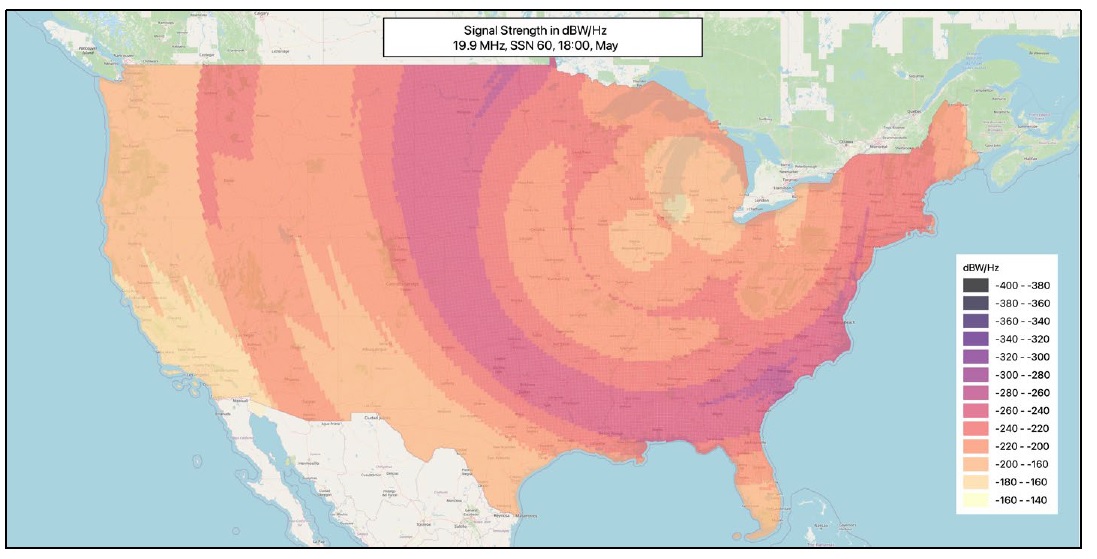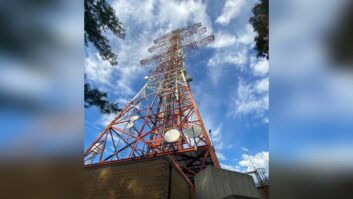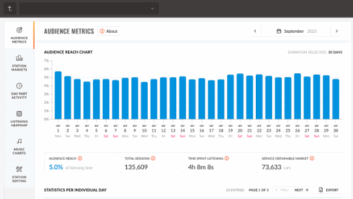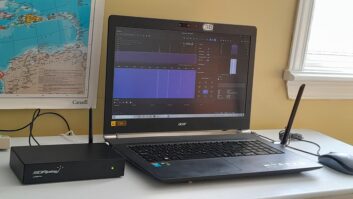
The FCC is taking public comment on a proposal to revise the rules governing the frequencies above 2 MHz and below 25 MHz.
The Shortwave Modernization Coalition thinks the 2-25 MHz band is underused and wants to use it for the long-distance transmission of time-sensitive data from fixed stations. The users would be companies working with certain kinds of financial transactions; the proposal would prohibit voice transmission and mobile operations.
The firms in the coalition are “market makers and liquidity providers” for exchange-traded financial instruments.
This high-frequency trading industry has in fact been using shortwave links for several years to send trading data between U.S. and foreign exchanges, but it has done so under experimental authorizations.
While the stations’ locations and frequencies are public data, the FCC has withheld key details of those operations from public disclosure, according to Bennett Kobb of Experimental Radio News, who follows this topic.
Experimental licenses are not intended for ongoing revenue operations. Now several major players in that industry (they are listed at the bottom of this story) coalesced into the SMC to petition for regular ongoing revenue operations under Part 90 of the FCC rules.
Kobb said the petition marks the first major proceeding dealing with shortwave since the 1940s.
Details
“Market makers” are financial institutions or individuals that participate in a capital market by buying and selling securities such as stocks, bonds and derivatives. They typically maintain an inventory of securities they are willing to buy and sell at publicly quoted prices from and to other traders, investors and institutions, according to SMC. It said these practices contribute to an efficient market system.
The coalition notes that transmissions at 2-25 MHz can travel over thousands of miles via skywave propagation, making this part of the spectrum ideal for transmission of relatively low-bandwidth data over long distances with minimal delay.
But it says current rules limit the frequencies to public safety, aeronautical, maritime, amateur and limited Part 90 Industrial/Business Pool uses. It believes the rules governing those Part 90 uses are out of date technically.
It believes that allowing its proposed uses on a non-exclusive, licensed basis will not impinge on existing users in that spectrum.
Its proposed amendments would enhance the ability of users to access “real-time financial data and continue to act in a manner to improve asset prices, to the benefit of centralized markets and market participants,” the coalition wrote. The changes also have the potential to spur additional innovations in the use of these frequencies, it said.
“The availability of 2-25 MHz band frequencies for such use also would obviate the need for businesses that require the fixed, long-distance transmission of time-sensitive data to rely on fiber, microwave and millimeter wave wireless, and satellite systems, which are costly, not capable of achieving comparably short transmission delay, and can be less secure than 2-25 MHz band transmission systems,” SMC wrote.
The group says this part of the spectrum has long been underutilized in the U.S., despite advantages including the need for only one transmit site and one receive site for transmissions over entire continents and oceans.
“In contrast, radio frequency transmissions via microwave and millimeter wave spectrum require multiple transmit and receive links to travel even relatively short distances.”
The SMC acknowledges there would be technical challenges.
“The approximately 11-year solar cycle causes variations in sunspot activity, resulting in changes to the levels of solar electromagnetic radiation that reach Earth. This, in turn, causes fluctuations in the altitude of the ionosphere at different times of day and from year-to-year. In addition, electromagnetic frequency noise in the 2-25 MHz Band is quite high as compared to other spectrum bands.”
However, its members have used their experimental licenses to develop technical solutions that enable switching among available 2-25 MHz band frequencies to overcome these challenges. It says this minimizes the likelihood that high-frequency spectrum transmission technologies will cause or experience harmful interference.
Although each experimental system is unique, the coalition wrote, they all avoid interference through technologies like “listen before transmit”; automatic frequency changes in the presence of other signals; and custom, in-house software and frequency agility.
The group submitted a technical report in support of its proposal. The software-based study considered four transmission cases representative of long-distance use cases including transmitting from New York west to Los Angeles; from Chicago to Seattle; from New York to São Paulo, Brazil; and from Chicago to London, U.K. It used several frequencies, with 20 kW transmit power and a transmitter bandwidth of 10 kHz.
“The 2-25 MHz band is the optimal transmission medium for reducing delay in the long-distance transmission of the data essential to their market making activities,” the coalition concluded.
The coalition includes DRW Holdings, IMC Trading, Jump Trading Group, Virtu Financial Inc., NLN Holdings, Optiver Services and Tower Research Capital. Those firms are affiliated variously with experimental licensees Skycast Services, Toggle Communications, RCA Telecom, 10Band, County Information Services, m-Wave Networks, Rockland Wireless and Alpha Bravo Communications.
Read the petition. The FCC is taking comments under proceeding RM-11953.







